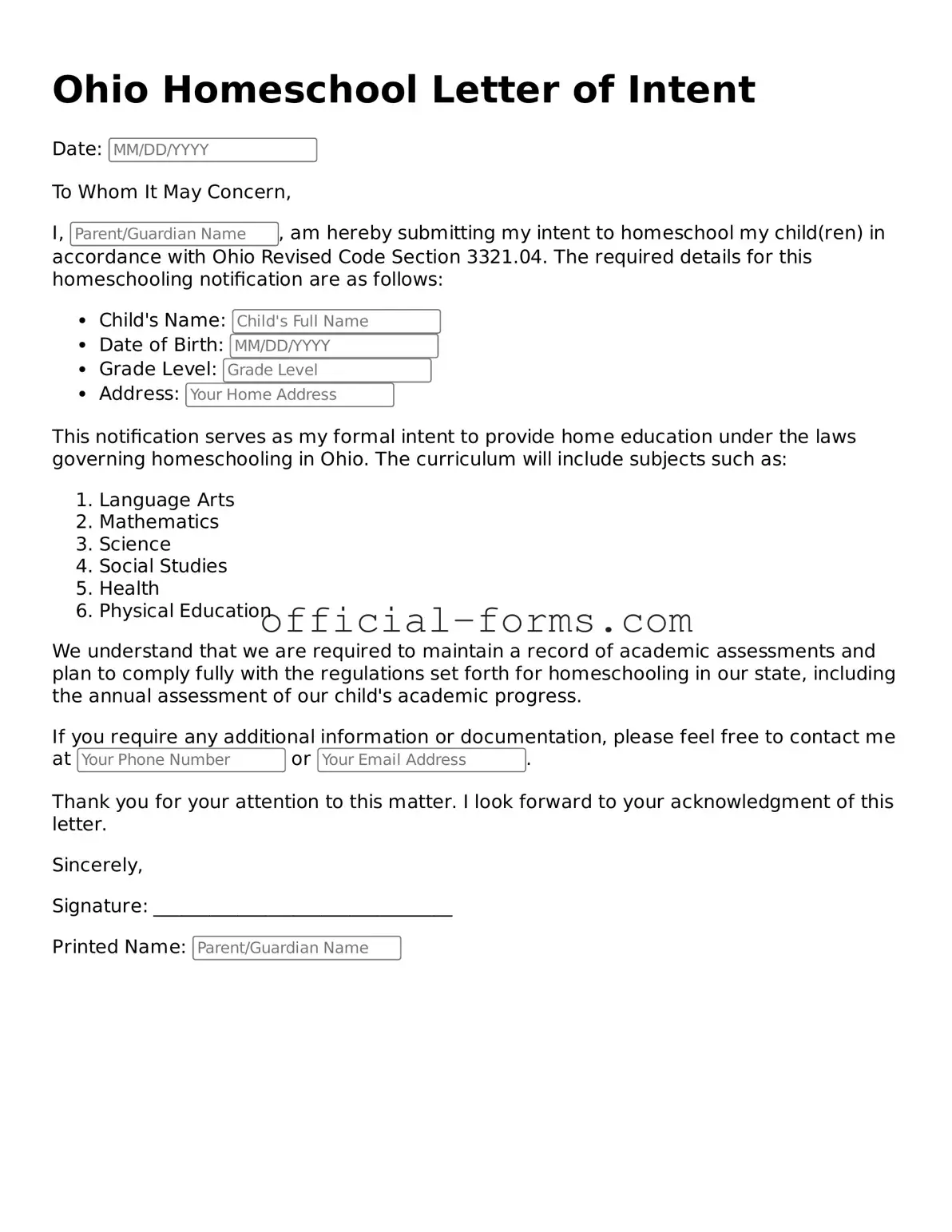Official Ohio Homeschool Letter of Intent Document
The Ohio Homeschool Letter of Intent form is a document that parents or guardians must submit to notify the local school district of their decision to homeschool their children. This form is essential for complying with state regulations and ensuring that the homeschooling process is officially recognized. Completing this form helps to establish a clear educational plan and maintain communication with the school district.
Open My Homeschool Letter of Intent Now
